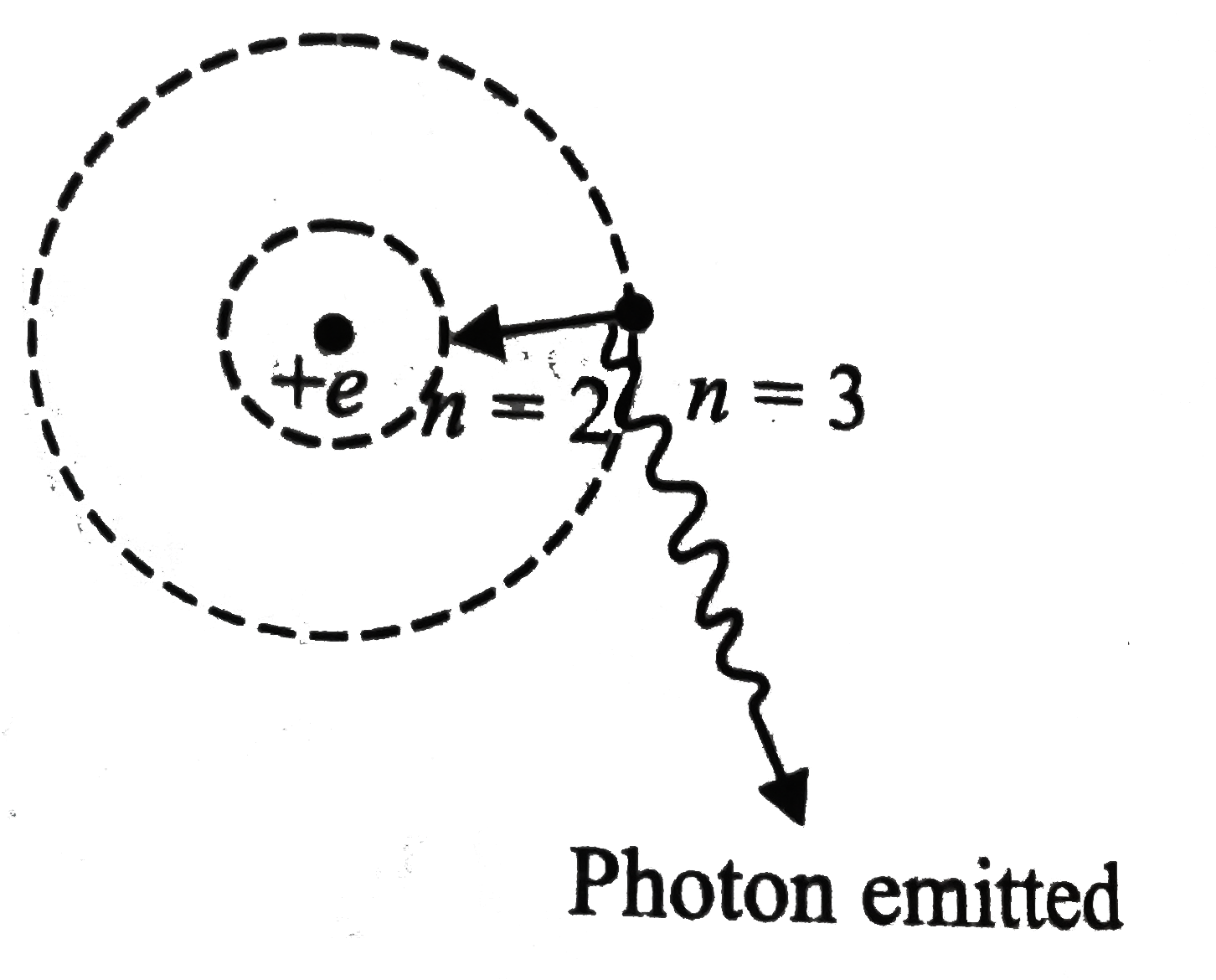Bohr's orbit are called as stationary state because
Electron in them are stationary
Their orbits have fixed radil
The electron in them have fixed energy
The protons remain in the nuclei and are stationary
Solution:
Bohr's orbits are referred to as stationary states for several reasons:
1. Fixed Energy Levels: In Bohr's model, electrons in these orbits possess specific, quantized energy levels. This means that each orbit corresponds to a certain energy state, and the electron does not lose energy while in that orbit. The energy levels are discrete, and the electron can only exist in these defined states.
2. Fixed Radii: The orbits themselves have fixed radii. Each energy level corresponds to a specific radius from the nucleus. As the electron moves to a higher energy level, it occupies a larger orbit, but within each energy level, the radius remains constant.
3. No Energy Loss: Unlike classical physics, where an electron moving in a circular path would lose energy due to radiation, Bohr's model states that electrons in these orbits do not radiate energy. This is why they are termed "stationary" - they do not spiral into the nucleus.
4. Nucleus Stability: The protons in the nucleus remain stationary and do not move in response to the electron's motion. This stability of the nucleus contributes to the overall stability of the atom.
In summary, Bohr's orbits are called stationary states because:
- Electrons in these orbits have fixed energy levels.
- The orbits have fixed radii.
- Electrons do not lose energy while in these orbits.
- The protons in the nucleus remain stationary.
Final Answer: Bohr's orbits are called stationary states because the electrons in them have fixed energy levels and do not radiate energy while in these defined orbits.
---
- Electrons in these orbits have fixed energy levels.
- The orbits have fixed radii.
- Electrons do not lose energy while in these orbits.
- The protons in the nucleus remain stationary.
Topper's Solved these Questions
- ATOMIC STRUCTUREBOOK - CENGAGE CHEMISTRY ENGLISHCHAPTER - ATOMIC STRUCTUREEXERCISE - Exercises (Subjective)
52 Videos
- ATOMIC STRUCTUREBOOK - CENGAGE CHEMISTRY ENGLISHCHAPTER - ATOMIC STRUCTUREEXERCISE - Exercises Linked Comprehension
50 Videos
- APPENDIX - INORGANIC VOLUME 1BOOK - CENGAGE CHEMISTRY ENGLISHCHAPTER - APPENDIX - INORGANIC VOLUME 1EXERCISE - chapter-7 Single correct answer
1 Videos
- CHEMICAL BONDING AND MOLECULAR STRUCTUREBOOK - CENGAGE CHEMISTRY ENGLISHCHAPTER - CHEMICAL BONDING AND MOLECULAR STRUCTUREEXERCISE - Archives Subjective
15 Videos
Similar Questions
A: bohr's orbits are also called stationary states
R : Electrons are stationary in an orbit .
View SolutionA: Bohr's orbits are regions where the electron may be found with large probability.
R: The orbital picture in Bohr's model of the hydrogen atom was inconsistent with the uncertainty principle.
View SolutionA single electron orbits around a stationary nucleus of charge +Ze, where Z is a constant and e is the electronic charge. It requires 47.2eV to excited the electron from the second Bohr orbit to the third Bohr orbit. Find (i) the value of Z, (ii) the energy required to excite the electron from the third to the fourth Bohr orbit and (iii) the wavelength of the electromagnetic radiation radiation to remove the electron from the first Bohr orbit to infinity.
View SolutionA single electron orbits around a stationary nucless of charge +Ze where Z is a constant and e is the magnitude of electronic charge ,if respuires 47.2 e

is excite the electron from the second bohr orbit to the third bohr orbit
a. Find the value of Z
View SolutionA single electron orbits around a stationary nucleus of charge +Ze. It requires 47.2 eV to excite the electron from the 2nd to 3rd Bohr orbit. Find atomic number 'Z' of atom .
View SolutionA single electron orbit around a stationary nucleus of charge +Ze where Z is a constant and e is the magnitude of the electronic charge. It requires47.2eV to excite the electron from the second bohr orbit to the third bohr orbit. Find
(i) The value of Z
(ii) The energy required by nucleus to excite the electron from the third to the fourth bohr orbit
(iii) The wavelength of the electronmagnetic radiation required to remove the electron from the first bohr orbit to inlinity
(iv) The energy potential energy potential energy and the angular momentum of the electron in the first bohr orbit
(v) The radius of the first bohr orbit (The ionization energy of hydrogen atom =13.6eV bohr radius =5.3×10−11matre velocity of light =3×108m/sec planks 's constant =6.6×10−34 jules - sec )
View SolutionIn Bohr's stationary orbits:
View SolutionConsider a system containing a negatively charge point (π,mπ=273me) orbital around a stationary nucleus of atomic number Z .The total energy (En) of ion is half of its potential energy (PEn) in nth stationary state .The motion of the point can be assumed to be in a uniform circular motion with centripetal force given by the force of attraction between the positive nucleus and the point .Assume that point revolves only in the stationary state defined by the quantization of its angular momentum about the nucleus as Bohr's model
Number of waves made by the point when it orbits in third excitation state are
View SolutionCalculate the energy of an electron in the second Bohr's orbit of an excited hydrogen atom the energy of electron in the first Bohr orbit is −2.18×10−11erg
View SolutionIn the Bohr's orbit, what is the ratio of total kinetic energy and total energy of the electron
View Solution
